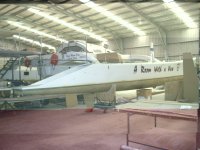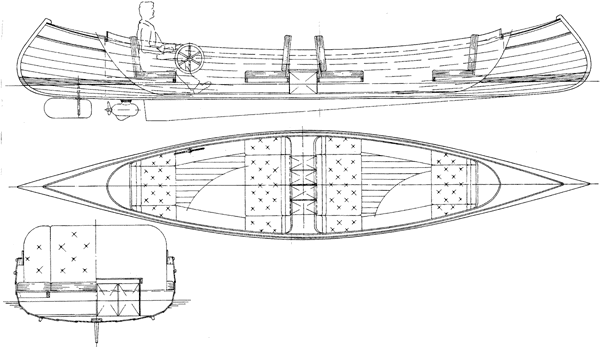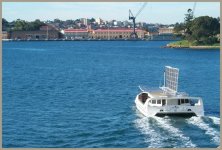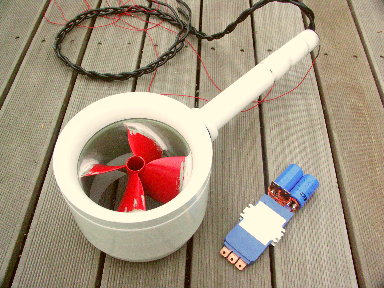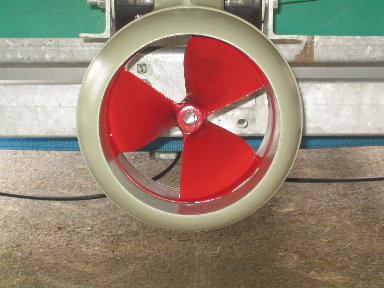Lock said:
John in CR said:
I'm looking at building a 1000-1500lb cat ....another 1000-1500lb of passengers ...sturdy enough ...comfortable 30-40miles out in the ocean, and will achieve 6-7 knots ...using only 1200-1500W.John
...been thinking about this. I know you mentioned wing sail (was sorry Walker was never able to make a go of his)... but 2HP approx for the electrics seems a little optimistic. Just thinking of tidal races and ocean currents where ya need a few knots across the bottom just to keep up with the water headed in the opposite direction! Especially in light airs. Or if you want to tow somebuddy or something... fight a fish? Hopefully your topsides will be super smooth too ta keep down the windage... Dick Newicks boats always had very "slippery" topsides:
http://www.jumpcut.com/view/?id=570EB9864F4711DB9FA92EF149F8C96D
BMI's "Room With A View" also looks pretty slippery...
tks
loK
Lock,
I want to take a shot at a charter fishing boat based mostly on a sailcat form, but primarily electric powered, in an effort to virtually eliminate fuel costs, which typically run $500-$1000/day here. I'm thinking $20-$50/day to fuel the generators for the higher power runs out and back, but run on batteries while trolling, which is at 5-7knots of water speed. I got the 1500W for 7 knots from the boat designer, but plan for some extra length as a hedge. It's that trolling at low speed for 6-8hrs on batteries that we want to be highly efficient. It's open ocean and I don't think direction matters, so with a biplane rig of small wingsails as assist, wind should only help our cause.
In addition to minimal fuel costs, boat motion will be far less than a monohull, and the lack of vibration and noise of a big diesel, will make for a far more pleasant outing for the passengers. Hell, this boat won't even have the sail flapping and rigging noise of a regular sailboat.
Regarding sailwings, there a plenty of functional ones, and they practically own the wind powered craft records on both land and water. Also, I'm look to size them for assist, not primary power, so that's last on the list and I'd probably just go with a pair of large surfsail rigs for the wind assist, and work on my ideas for soft wingsails after the concept is proven.
I'm confident that I can build a lightweight seaworthy boat. I'm no marine engineer, so I'm going on faith regarding the power requirements, but it doesn't take much to go relatively slow (well below hull speed with these aspect ratios) if you aren't dragging the big wake of a typical boat at 6kts, and under wind power these hulls have proven to do over 20 knots.
My main concerns are more about the concept working for deep sea sportsfishing. eg Does the noise and big wake pulled by a traditional rig attract the fish, but I think my last captain's beliefs were just old wives tales. If sound is an attractant, we can just drop a transducer underwater, and to me the wake only obscures the baits in tow. The patio sized deck will a tremendous advantage, but the devil will be in the details (setting up so the mate can easily get down to the water to haul in a 500lb tuna or marlin, etc.). One thing is for sure, it will be hugely different from current charter fishing, and I can't think of anything much more fun to test, so we'll see. Worst case, it doesn't work, and with small changes I convert it and sell it as a sailboat with a hybrid electric/diesel drive.
John



